32 Reasons Behind Golf's No.1 Pet Peeve... Slow Play!
Slow play has become a common topic of conversation both at golf clubs and out on tour. Here, we highlight some of the factors contributing to the issue

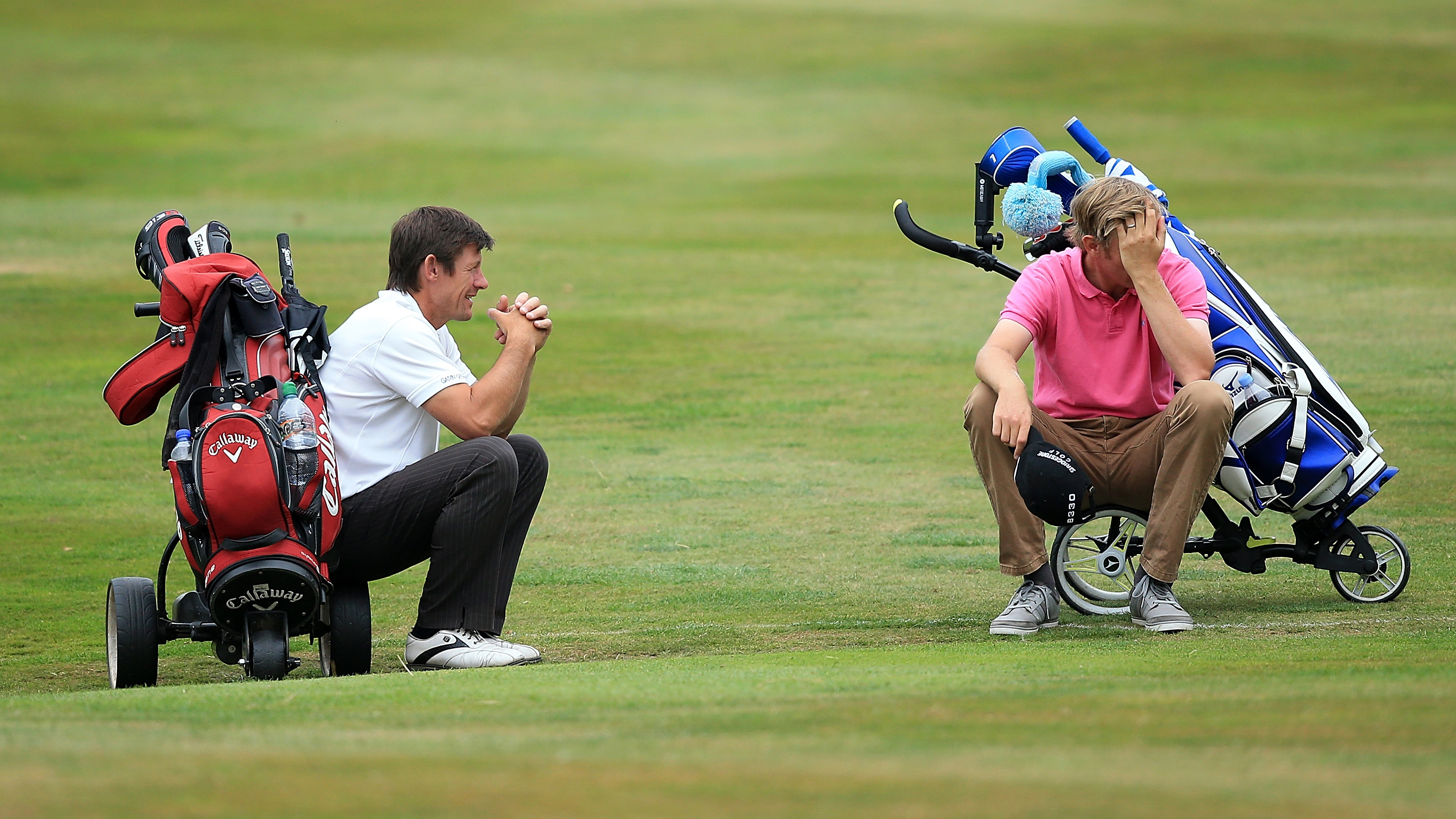
Slow play. It’s the topic of conversation among golfers that just doesn't seem to want to go away. Tap in to the post-round chat in virtually any clubhouse, and someone, somewhere will be moaning about how long it’s just taken to play a round of golf.
Part of the problem with golf compared to other sports is that there are several clashes of culture, if you like, every time you venture out on the course. The same arena must accommodate simultaneously everyone from the scratch golfer to the 54-handicapper; the long-established player to the rank novice; the octogenarian to the lively youth; the nippy twoball to the inevitably slower fourball. It’s little wonder that this sometimes results in frustration and friction among the various parties.
Pace of play remains one of golf’s most talked-about issues and people do get very upset when they fall victim to an unacceptably slow round, so here, we highlight some of the many potential contributing factors. Are you or your golfing friends guilty of any of these...?
Not ringing the bell
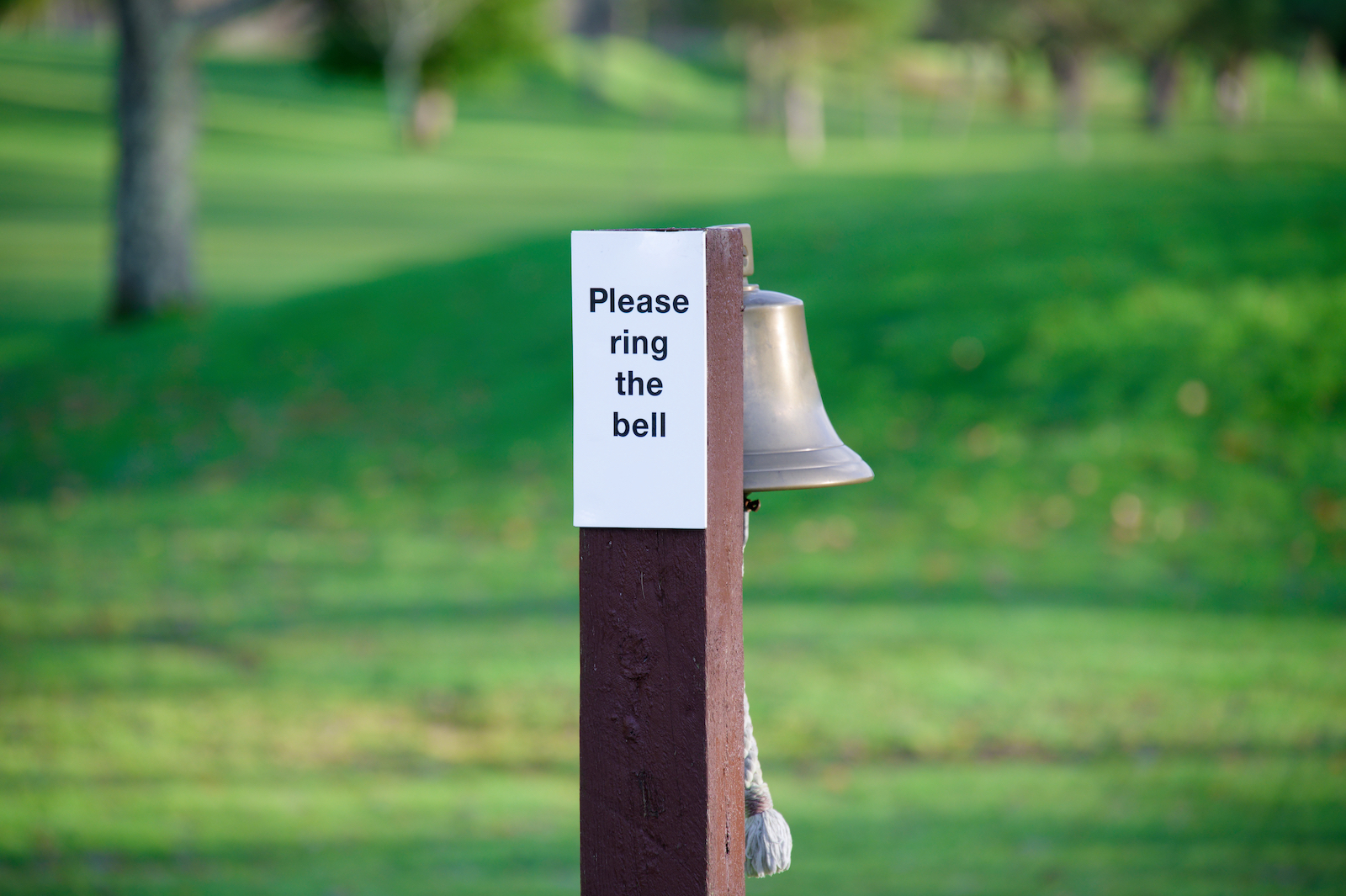
Some blind or semi-blind golf holes will feature bells set alongside the fairway that you should ring after you have played your second shot to let those behind know that it is now safe for them to tee off. If you fail to ring the bell, that means those behind will have no real idea whether or not it’s safe to play, potentially leading to unnecessary delays. So, whenever there’s a bell on a golf hole, make sure you remember to ring it on your way past.
Not sticking to the rules on call-up holes

Call-up holes are typically either long par 3s, or sometimes short par 4s where there’s a good chance some golfers may be able to hit it up somewhere near the green off the tee. In reality, not many do, and the idea is that by standing aside to let the next group tee off, play then continues a little faster as the group behind can be walking up while the group ahead sets about its greenside tidying work, rather than them having to wait until everyone ahead has finished the hole. Not sticking to the script on call-up holes negates the intended benefits.
Not taking all clubs needed to finish a hole

We’ve probably all played with someone – often those newer to the game – who plonk their bag on one side of the green, grab a wedge to go and play a shot from beyond the other side of the green, but don’t take their putter with them. This means they have to then come all the way back to the bag to get the putter and then finish off the hole. Taking both clubs in the first place would prevent this to’ing and fro’ing. If you’re worried about lying a club down and getting the grip wet, simply prop it up on a tee-peg.
Playing badly
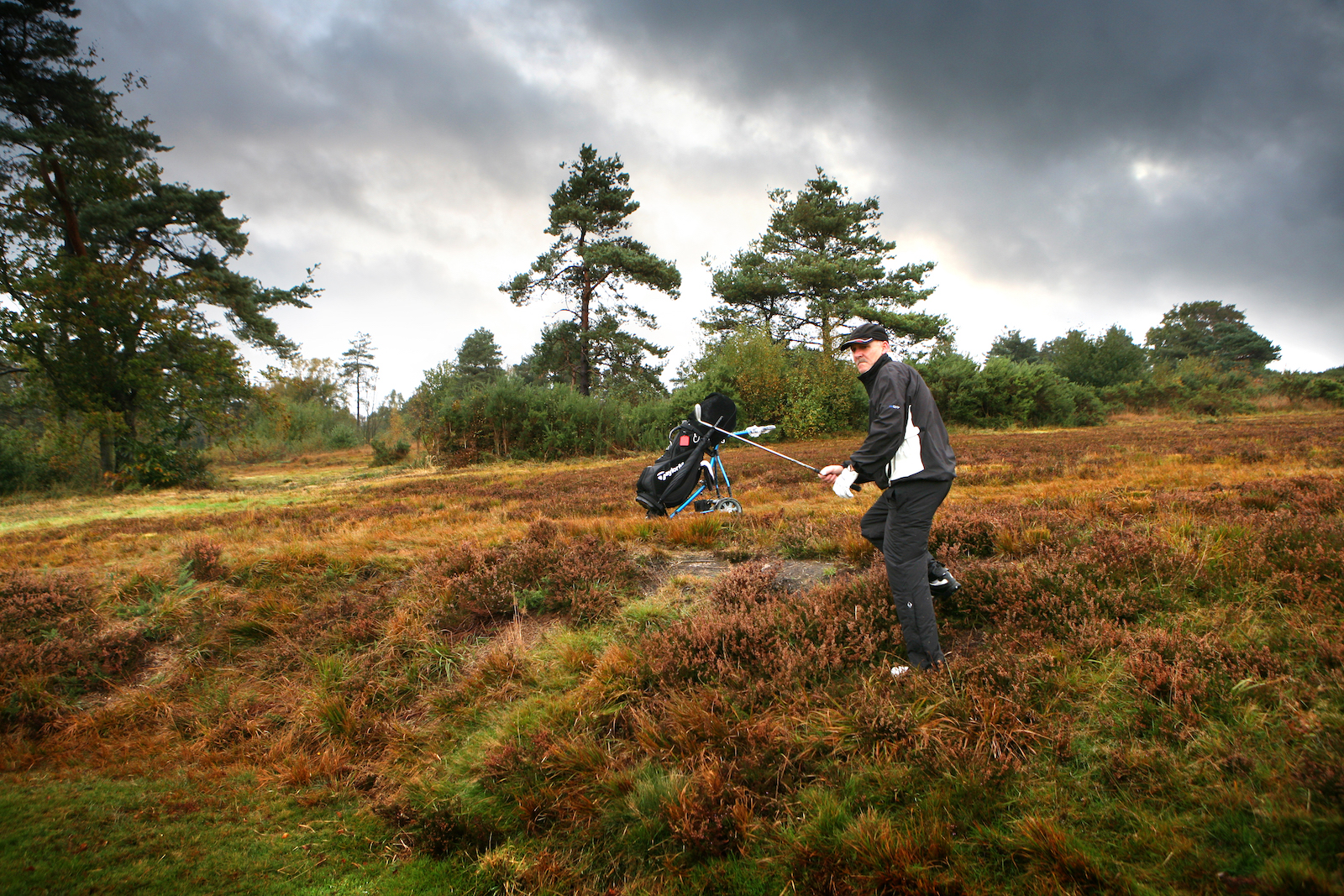
There’s no getting away from the reality that sometimes – although not always – playing badly takes more time. More shots, probably more ball searching and more recovery attempts from spots where decent progress is unlikely all take their toll. There’s not a lot you can do about this really other than to always pick up in a Stableford as soon as you can no longer score on a hole, and likewise in fourball betterball if your partner is 10ft away in two and you’re chipping on for five (subject to the number of shots you get, of course!).
Subscribe to the Golf Monthly newsletter to stay up to date with all the latest tour news, equipment news, reviews, head-to-heads and buyer’s guides from our team of experienced experts.
Being new to the game

Unless you’re a complete natural and take to the game like a duck to water, golf is hard at first. Even if you’ve got the hang of getting it away somewhere off the tee, it’s likely that shots off the deck where turf interaction is required, or even more so from bunkers, will remain a greater challenge for longer. While more established golfers do need to exercise patience at times, it’s also probably wise for those new to the game not to venture out during peak times (if possible) for their sake as much as others’.
Not thinking about putts soon enough
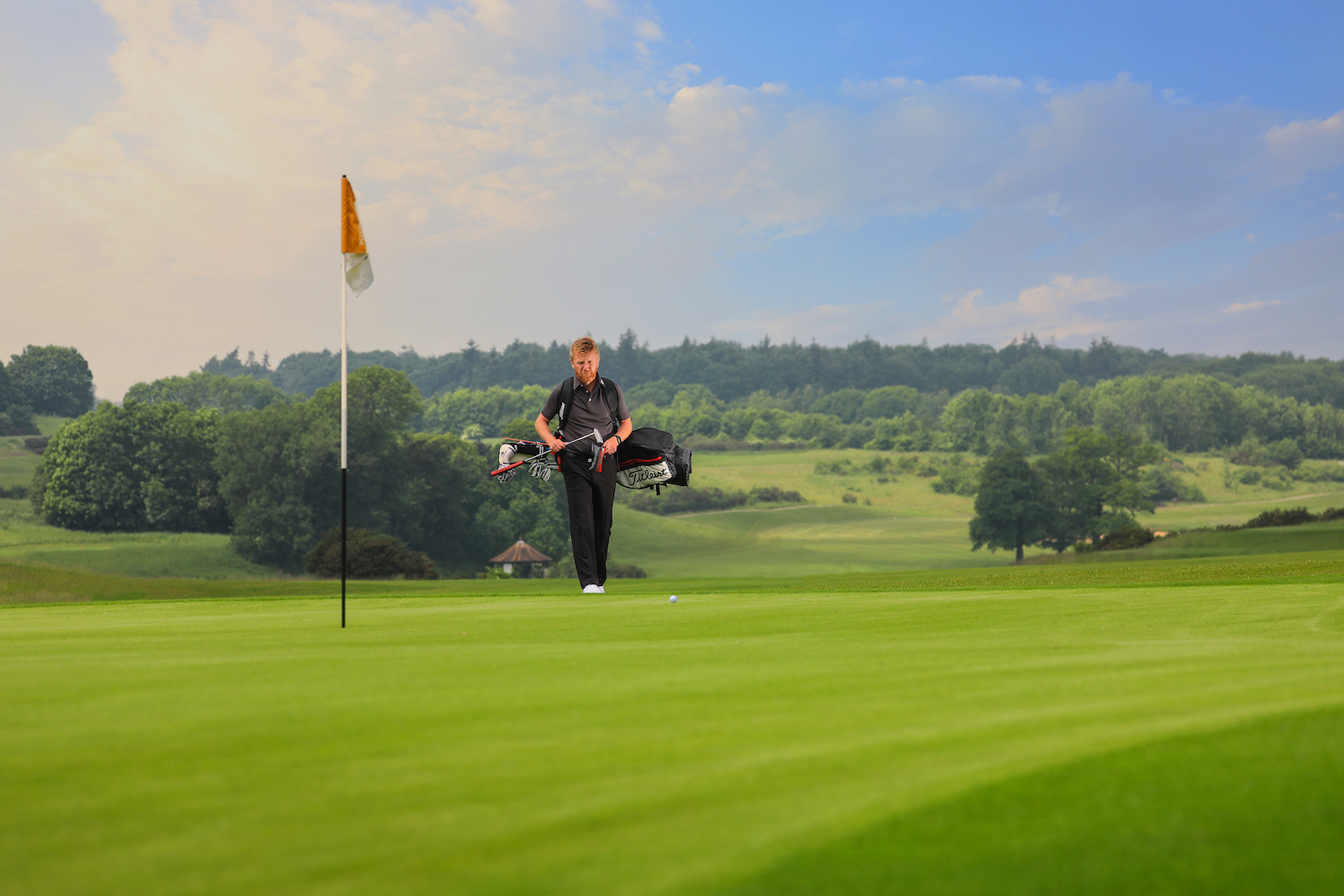
Some golfers don’t start thinking about their putts soon enough and only really give it their full attention when it’s their turn. A bit more advance preparation can save a little time here. You can get a general idea of your read when first approaching the green, and, as long as you're not in someone’s eyeline as they putt and aren’t distracting anyone, you can be working on your line while others are putting. Don’t wait until it is your turn to start the whole process.
Using a trolley
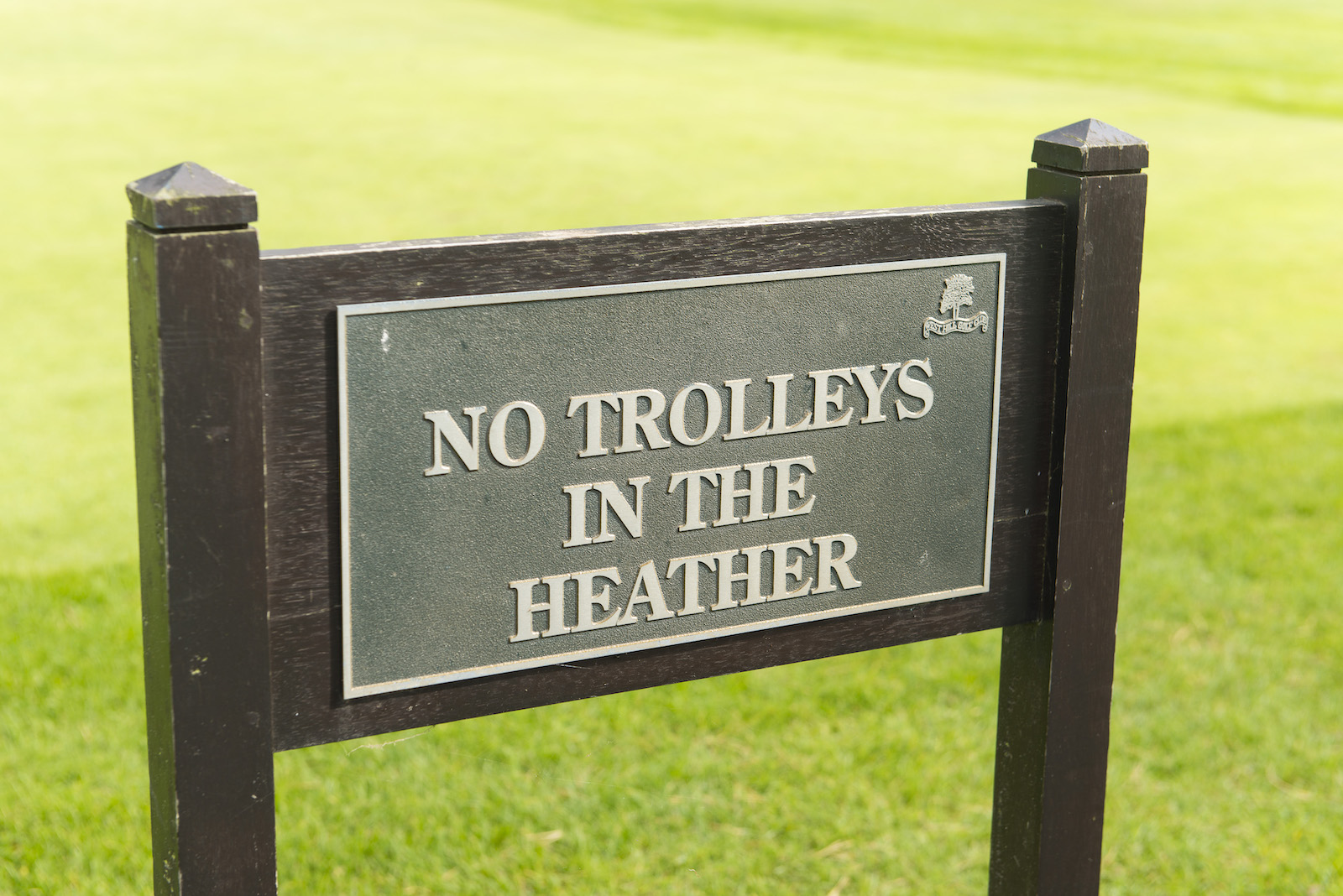
Yes, many of us like to use a trolley but it can slow things down because you simply can’t always take it where you want to go. It might mean having to take longer, safe routes from tees to fairways where slopes are involved; longer routes around green complexes, especially when traffic management is in force out of season via white lines, ropes or direction signs; and not being able to always get right to where your ball is when you’re out of position in trees, heavy rough or heather. Those carrying have more flexibility over where they can go.
Poor course signage

Inadequate course signage leads to confusion and can adversely affect pace of play, whether it’s a lack of ‘next tee’ signs, or call-up holes not being flagged up obviously. Not having a ‘next tee’ sign behind a green where it isn’t immediately obvious is a double negative – golfers won’t know where best to leave their bags before putting and won’t then be sure where to go afterwards. Some courses have bell holes that aren’t signed from the tee; others have holes crying out for a bell, where the only way to really play safely is to walk a long way forward to double check. Clear signage is better for everyone.
Waiting for an out-of-range green to clear

Watching the group ahead fail to hit it halfway up a long par 4 then wait for the green to clear can be hugely frustrating for those behind. Clearly, a degree of caution is needed as we’re all capable of suddenly flushing one or hitting the occasional distance-enhancing draw when a fade is our stock shot. But if you’ve hit it 200 yards off the tee into the wind and the green is still 250 yards away, there’s pretty strong evidence to suggest you won’t be reaching and can play quite safely to avoid delaying those behind.
Too much fourball play

Four people playing 18 holes of golf is clearly almost always going to take longer than two people, regardless of how good those four are. This is why some courses try to separate out twos and fours as much as possible via different starting tees for groups of different sizes. Understandably some courses are interested in optimising the revenue from each tee-time, but too much fourball play, especially where each player is playing his or her one ball rather than in a pairs format, is always going to slow things down.
Not watching playing companions' shots
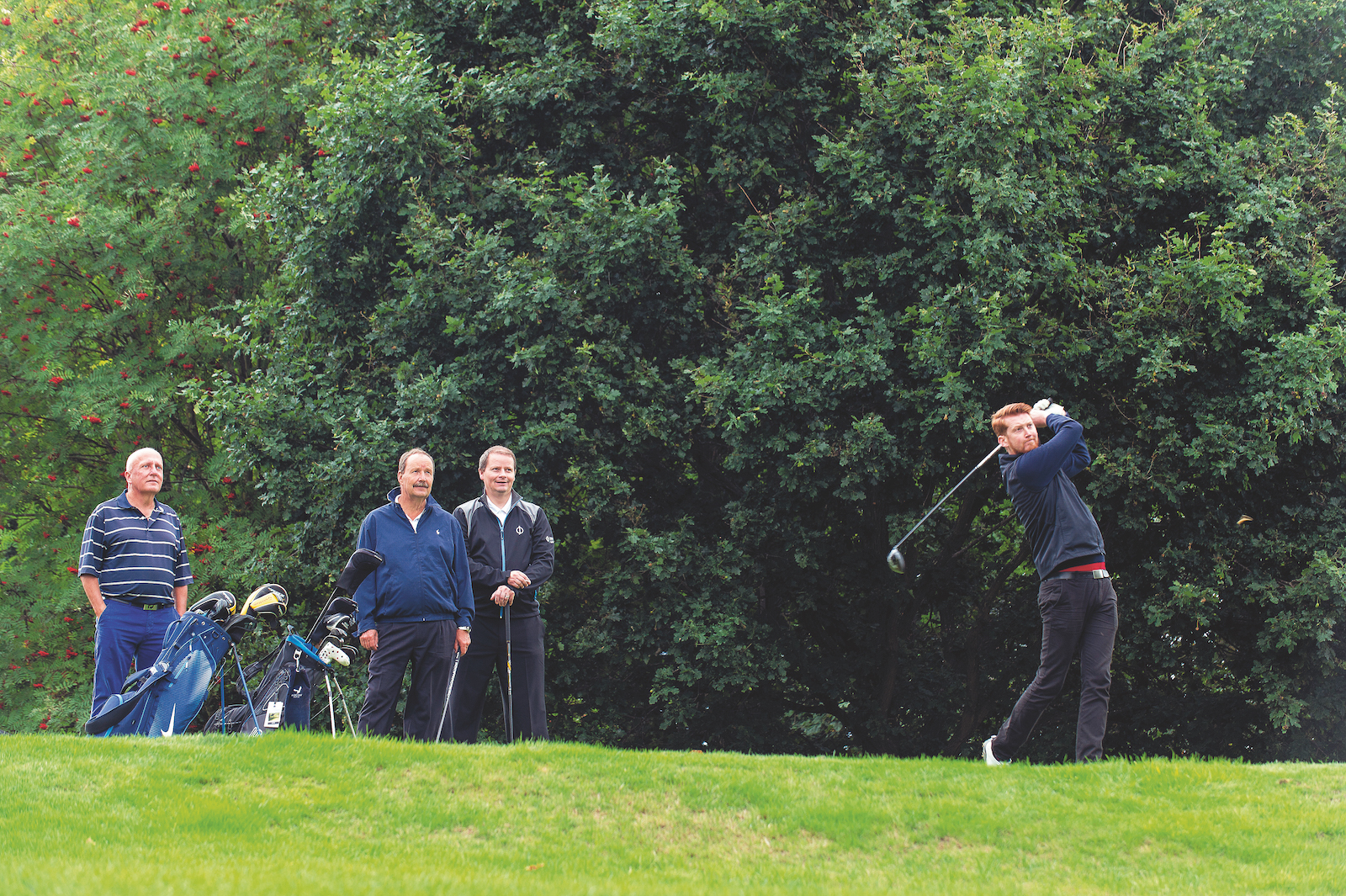
Following the flight of a golf ball if your eyesight is not the best or you’re playing straight into the sun can be difficult for the person playing the shot. The more pairs of eyes following the ball, the greater the chance of someone seeing where it went and finding it quickly. The better idea you have of where someone you’re playing with has hit it, the less time you should then have to spend searching for it. So do unto others as you would have them do unto you.
Excessive practice swings

Don’t take practice swings to too great an extreme out on the course. Yes, many of us like to take a practice swing away from the ball to rehearse the movement we’re then hoping to make. But no-one wants to see you taking swing after swing, especially if you’re taking a proper divot on every one and thus damaging the turf beyond that which is necessary. All things in moderation is a good mantra for a lot of things – practice swings would definitely be among them.
Double punishment under trees

This is one for golf clubs and course managers really. Surely hitting your ball into the trees is punishment enough for most golfers, without then finding yourself in thick rough or vegetation that will make your escape either problematic or impossible, or will result in a long walk back as you either can’t find your ball or it’s the only realistic unplayable ball option open to you. Thinning things out under trees keeps play moving and keeps golfers motivated.
Twos and fours don’t mix

Twos and fours are a bad mix when it comes to pace of play. One golf club sign we've seen highlighting anticipated round times shows an expected difference of 40 minutes between twoballs and fourballs. That’s a lot of time standing around waiting if twoballs are unable to get through the fourballs ahead on a crowded course. If course geography allows, a two-tee start, keeping groups of different sizes apart for as long as possible, goes some way to alleviating matters.
Green speeds and pin positions

There seems to be a growing obsession with ultra-fast greens, even though many older clubs’ greens were never designed to be played at such a pace. Some clubs also lose sight of ‘six easy, six medium, six tough’ when it comes to pin positions, all resulting in too many missed greens and much three-putting, both of which will only slow things down. Slightly less lively green speeds will help, especially on undulating surfaces (this is the Himalayas putting green at St Andrews), along with more pins in accessible positions.
Absence of yardage markers

Despite the arrival of GPS devices and rangefinders, many golfers are still happy with a cursory glance at the 150-yard marker. Not having them can slow play down for those who haven’t made the technological leap, especially if sprinkler head yardages are miles apart. Installing or retaining discreet, yet obvious, distance markers can only ever help when it comes to pace of play as they are still more than adequate for golfers who are perfectly content with rough, rather than ultra-precise, yardages.
Long rough too close to playing surfaces
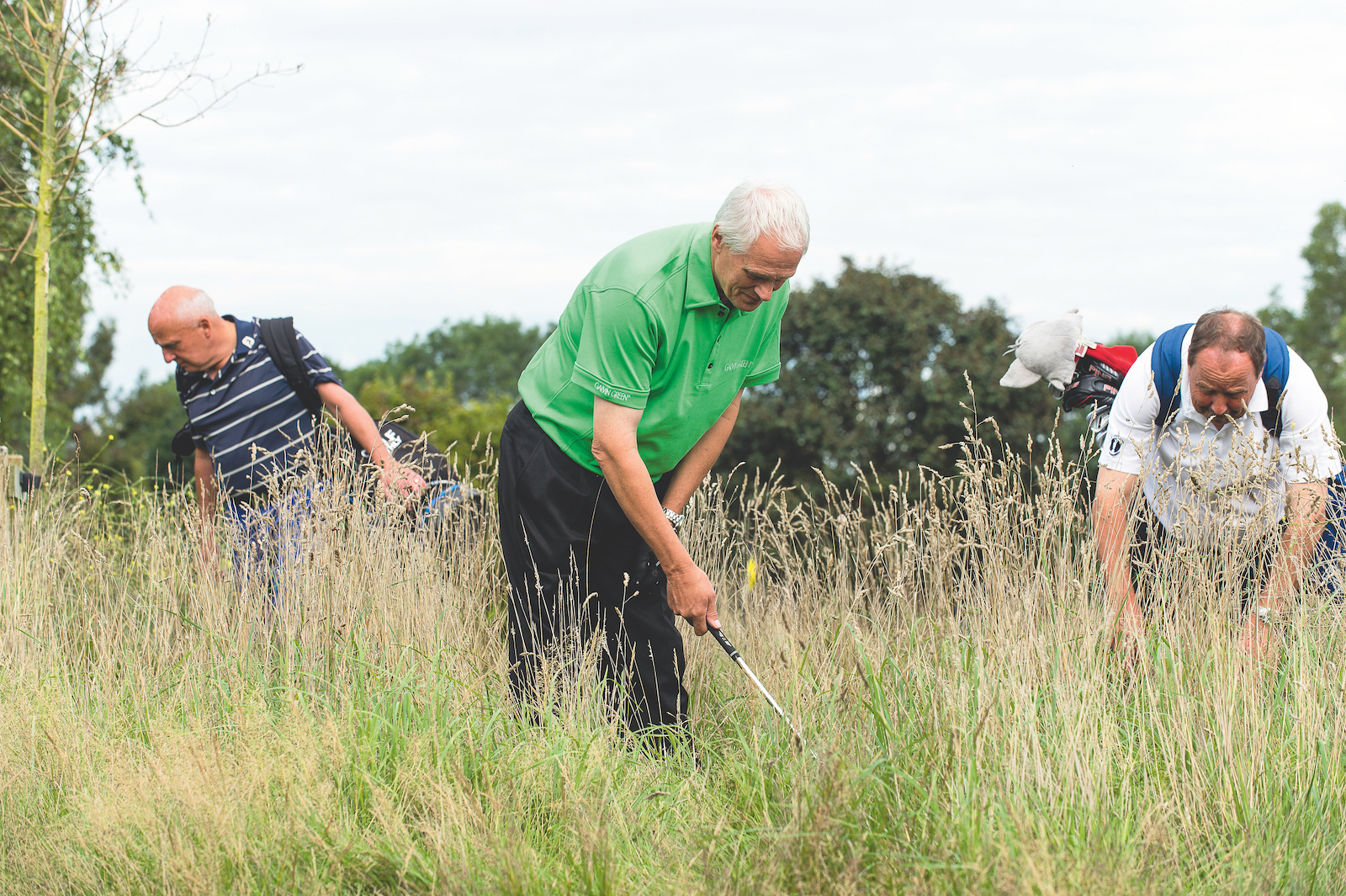
Most of us find the game hard enough without having to contend with a course set-up that will either see us taking more shots or spending more time looking for balls. Long rough too close to the playing lines can be a big problem so it would be good for clubs to move away from a mindset of seeking to create a stern challenge, and set things up more to encourage, or even flatter, golfers. Overly long rough will only ever slow play down – why not cut it back more where it’s closest to the playing lines?
Leaving your bag on the wrong side of the green
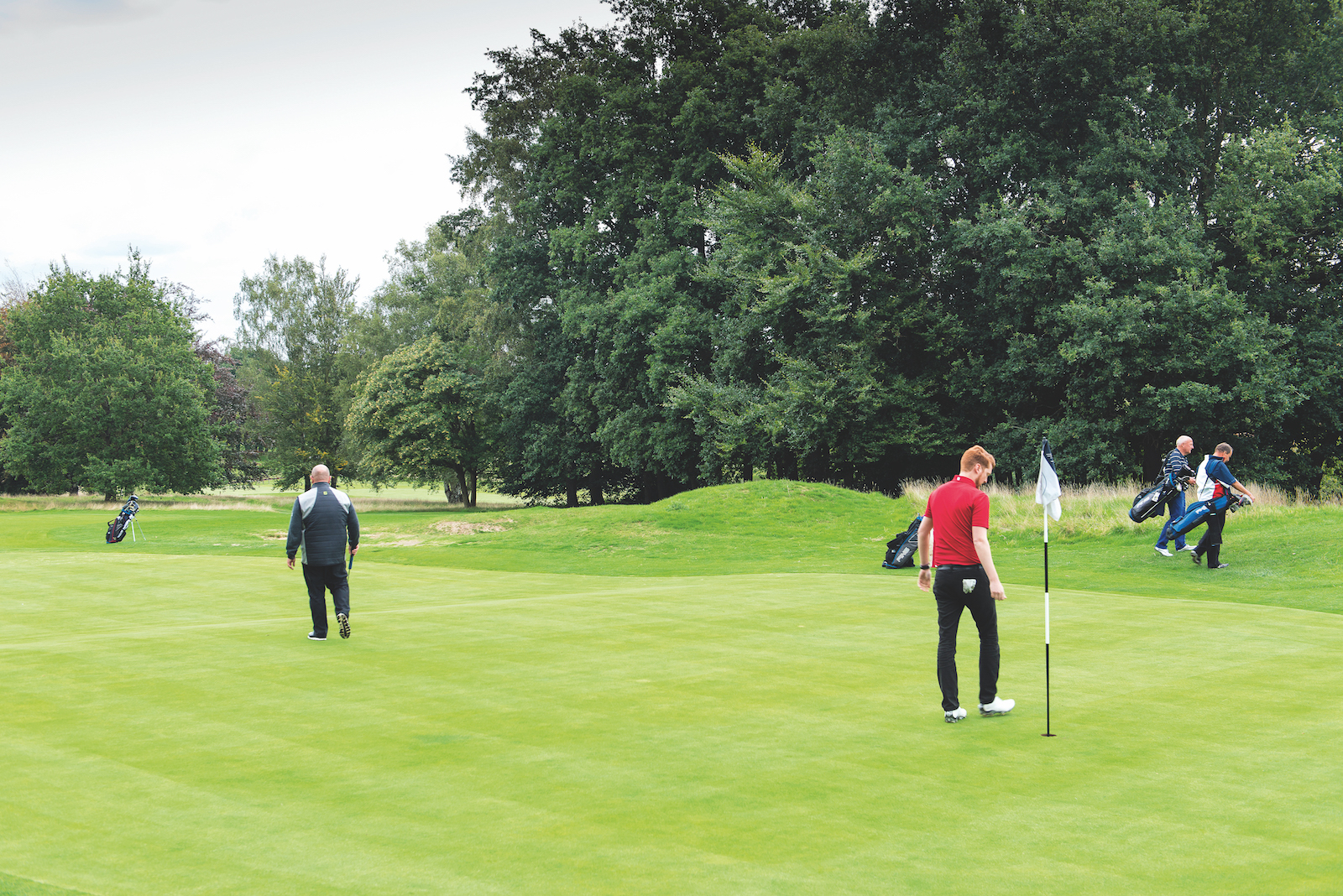
Leaving your bag on the wrong side of a green delays your group and can be frustrating to watch for those behind. Try to leave your bag or trolley at the point where you’ll be exiting the green after putting out. Yes, sometimes you may not know a course well enough to be sure, or the logistics of where you’ve had to chip from or where trolleys are allowed to go may mitigate against it. But a good thought to have as you approach a green is, “Where am I heading next?”
Being on your phone when it's your turn
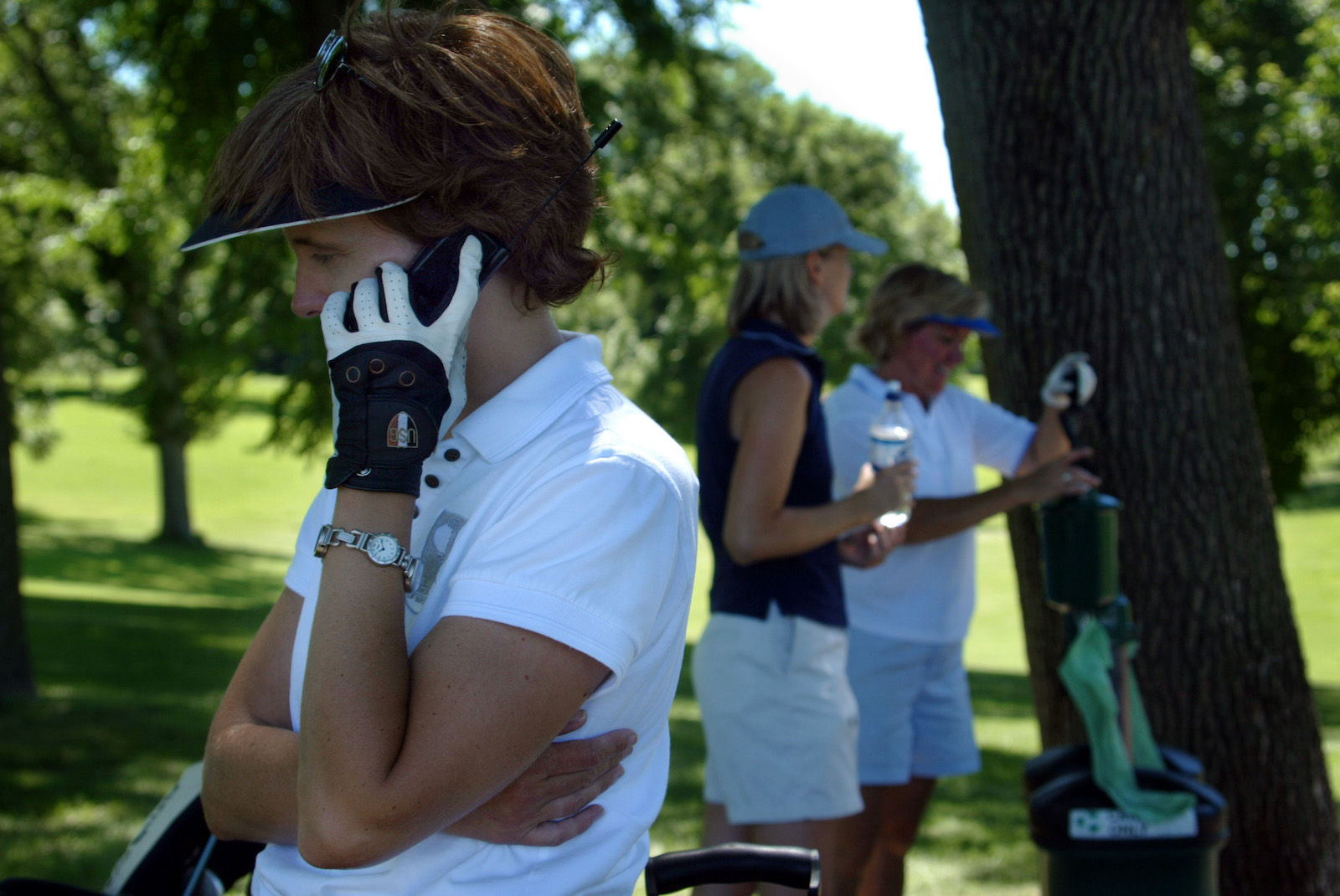
Most golfers these days accept that you might need your phone out on the golf course to occasionally keep on top of things discreetly if it doesn’t hold up play. But when you take things beyond that and end up being on the phone when it's your turn to play, that’s when other golfers’ patience levels begin to run out. If you absolutely have to use your phone occasionally, most people accept that; but it should never when others are waiting for you to play your shot. Ideally, it would be even better if we could just switch off from the outside world completely for four hours!
Not watching your shots all the way

Golf is a frustrating game. A woeful shot at a crucial moment can be too much to bear for some, and rather than following the wayward shot closely, it can be all too easy to spin away in disgust rather than keeping an eye on it. But at such times we’re actually best served by watching the ball as closely as possible to give ourselves the best chance of finding it quickly. It’s not in the best interests of others in our group or those following if we have to spend extra time looking for a ball we didn’t really follow.
Overly long pre-shot routines
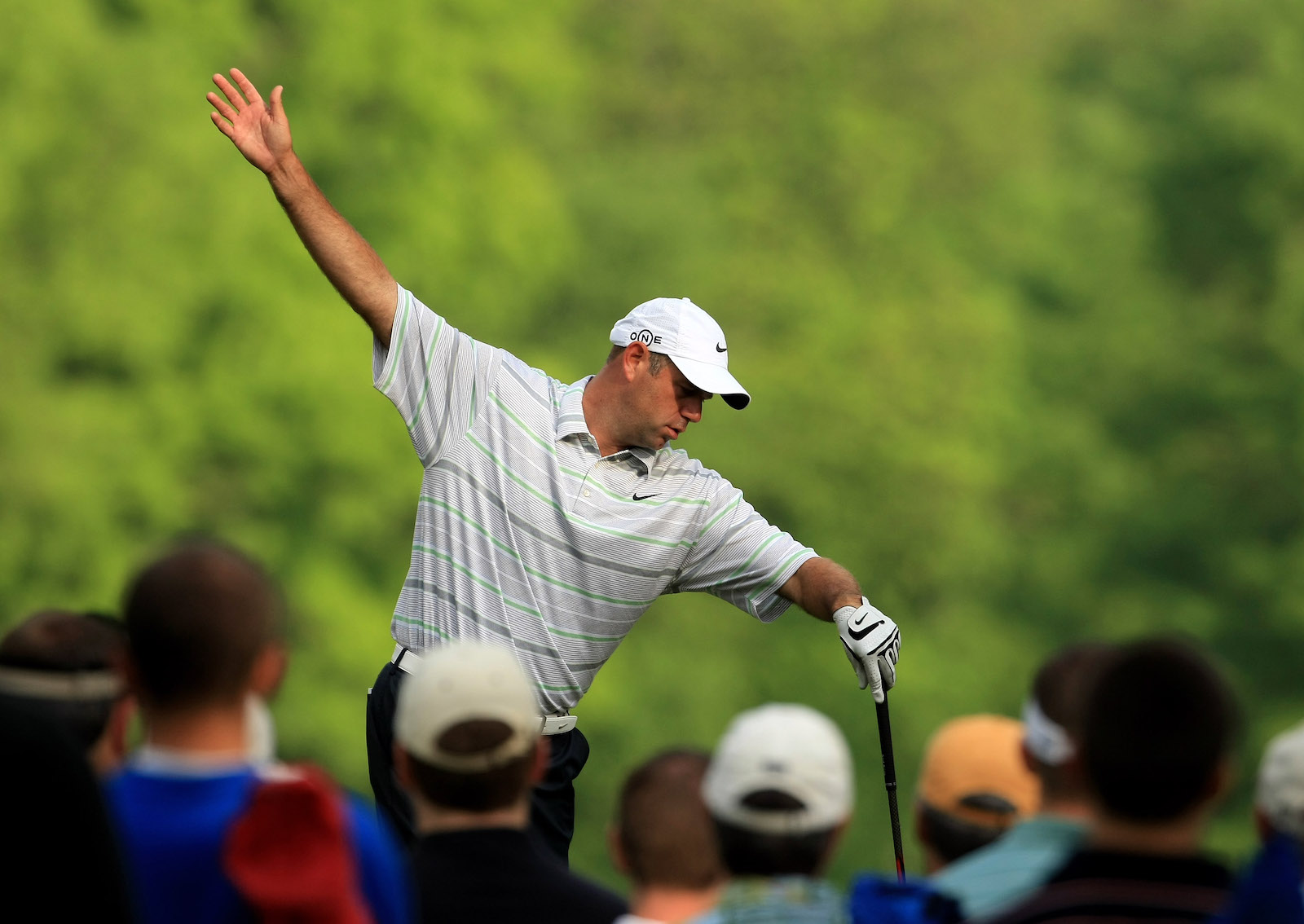
We’ve all played with people whose pre-shot routines seem to go on so long that it becomes painful to watch. If your routine involves assessing the yardage, carefully selecting your club, standing behind the ball with club out in front of you, partial practice swings away from the ball then three more right next to it before hitting, there will quickly be a logjam of irritated golfers behind you and you’re unlikely to be the most popular person in the bar afterwards!
Not adopting 'ready golf'

The growing case for more ‘ready golf’ in stroke play has been heeded by the rulemakers and is now mentioned specifically in Rule 6.4b. For example, if you’ve only just got it out of a bunker and it’s still you to putt, it makes more sense for others to putt while you rake the bunker, get your putter out and so on. Or, if you’re shorter than your playing partners and can’t reach the green, you should play first even if it’s not your turn. It applies in stroke play only, though, as the order can have a greater bearing in match play.
Long walks from green to tee

This is not one you can actually do anything about, but round times will obviously be slower if you have to do significantly more walking from greens to tees. If every green-to-tee walk were 100 yards, for example, that’s over a mile a round so another 15-20 minutes. Perhaps this has more bearing when people choose to walk on a layout that has really been designed for buggy usage and the distances involved can be pretty significant, perhaps where housing is part of the overall project/facility.
Not hitting a provisional ball

Rule 18.3 specifically allows you to do something that will keep delays to a minimum when you’ve hit your ball into some undesirable spot. Yet golfers often spurn the chance to do so for unknown reasons. In a medal competition, if you don’t hit a provisional ball and can’t then find the original, the impact on your group’s round time could be ten to 15 minutes following the search and long walk back. There will be a negative impact on round times for those following as well, even if you do wave a group through. If there’s any doubt, play a provisional.
Walking too slowly
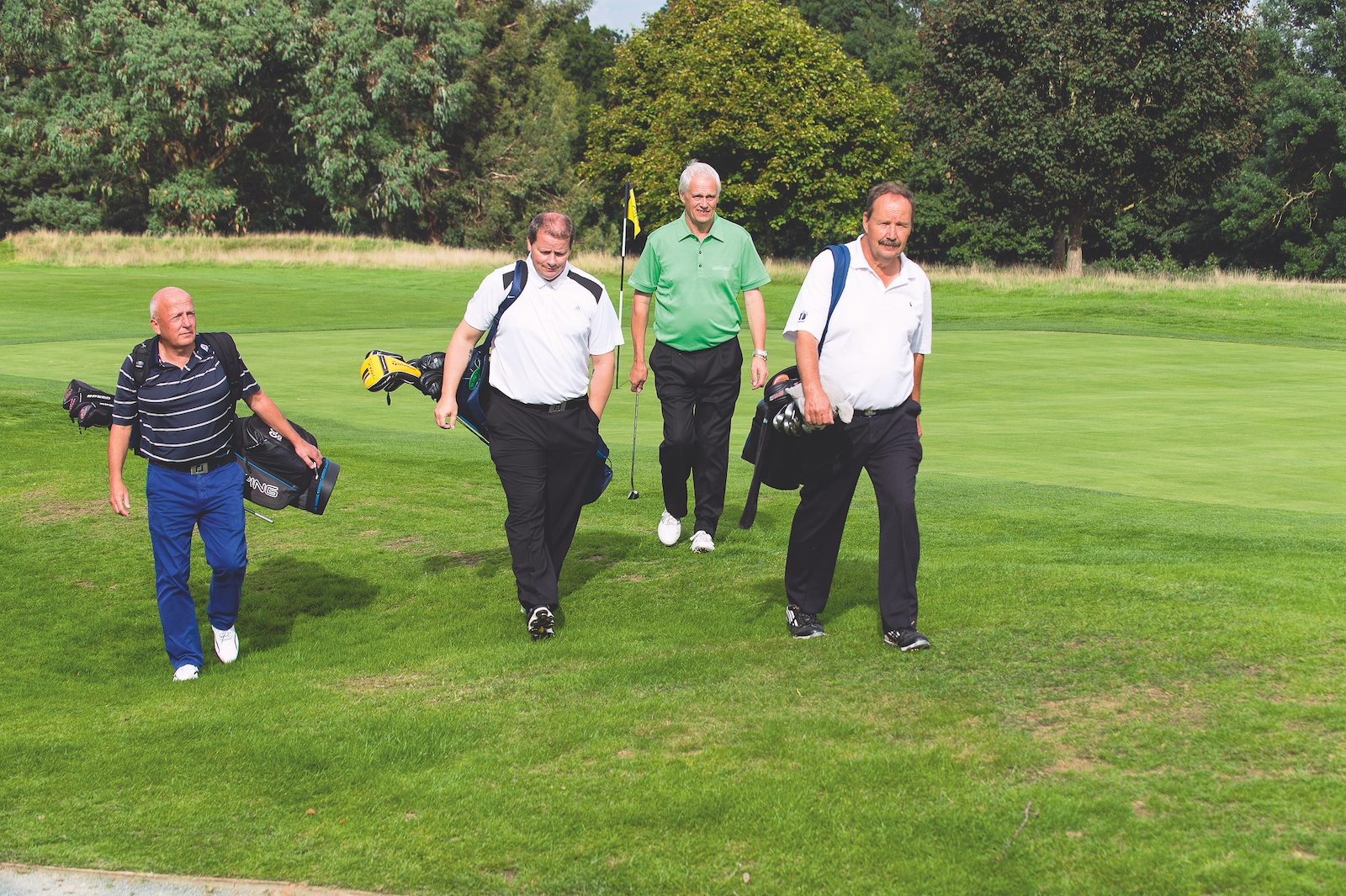
We’re all different, aren’t we? We possess different traits, different levels of fitness and come in all shapes, sizes and vintages. Some have a sense of purpose and urgency; others adopt a more leisurely pace. Golf may not be a race but some golfers do tend to amble along oblivious to what’s going on around – and particularly behind – them, rather than maintaining the pace required to keep up. If you’re losing ground, a slightly brisker pace may be required to prevent your group holding up those behind.
Marking your scorecard on the tee when it's your turn
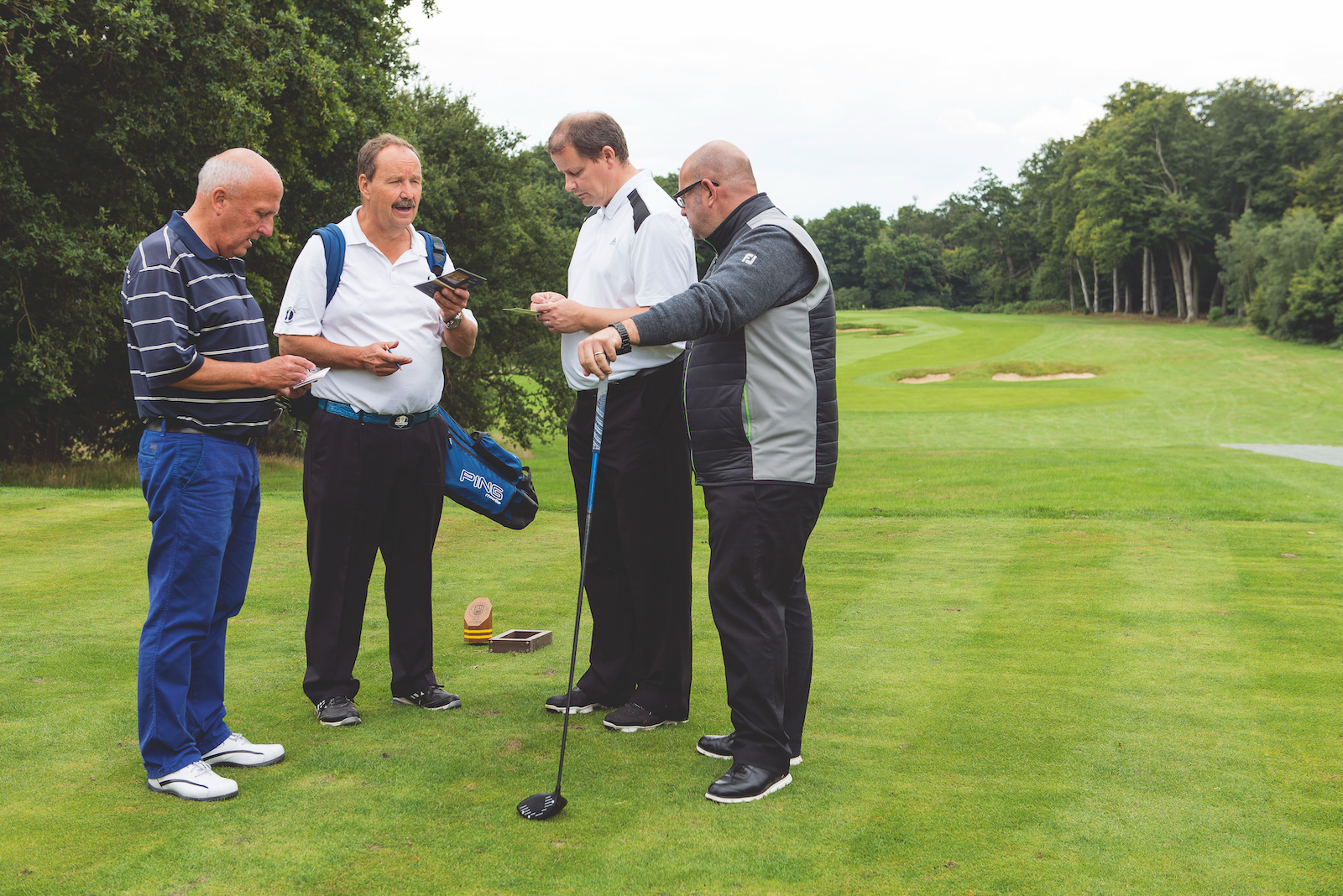
If the fairway or green ahead is clear, the only priority on the tee is for the person with the honour to play in a timely fashion – or anyone, if you’re playing ‘ready golf’. There’s plenty of time to mark cards while others are hitting. If you know it’s you to go first, have your glove on ready and be working out your club as soon as you get to the tee. It’s frustrating for those behind to have to watch a group on the next tee milling about marking cards and chatting rather than anyone actually stepping up and hitting it.
Playing off inappropriate tees
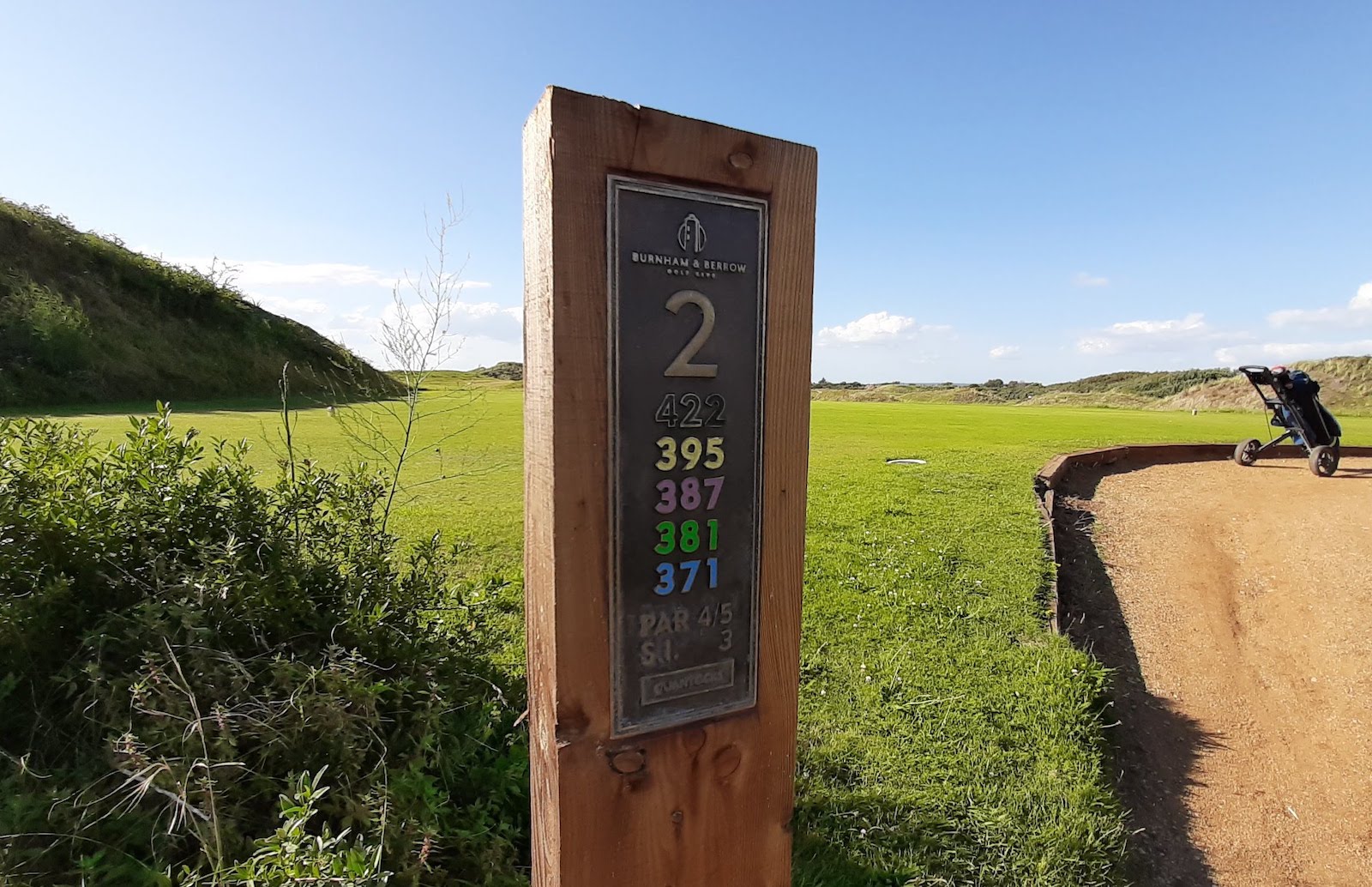
Finding the balance between ego and realism can be a difficult one for golfers. Some seem irrationally driven to tackle the course at maximum length regardless of whether their ability and hitting distances are up to that challenge. Often, they’re not, and the game can grind to a halt as golfers continually have to remove headcovers for every approach... with the dispersion pattern that typically brings! Teeing it forward will probably be more enjoyable for them and for those following!
Not waving people through quickly when searching
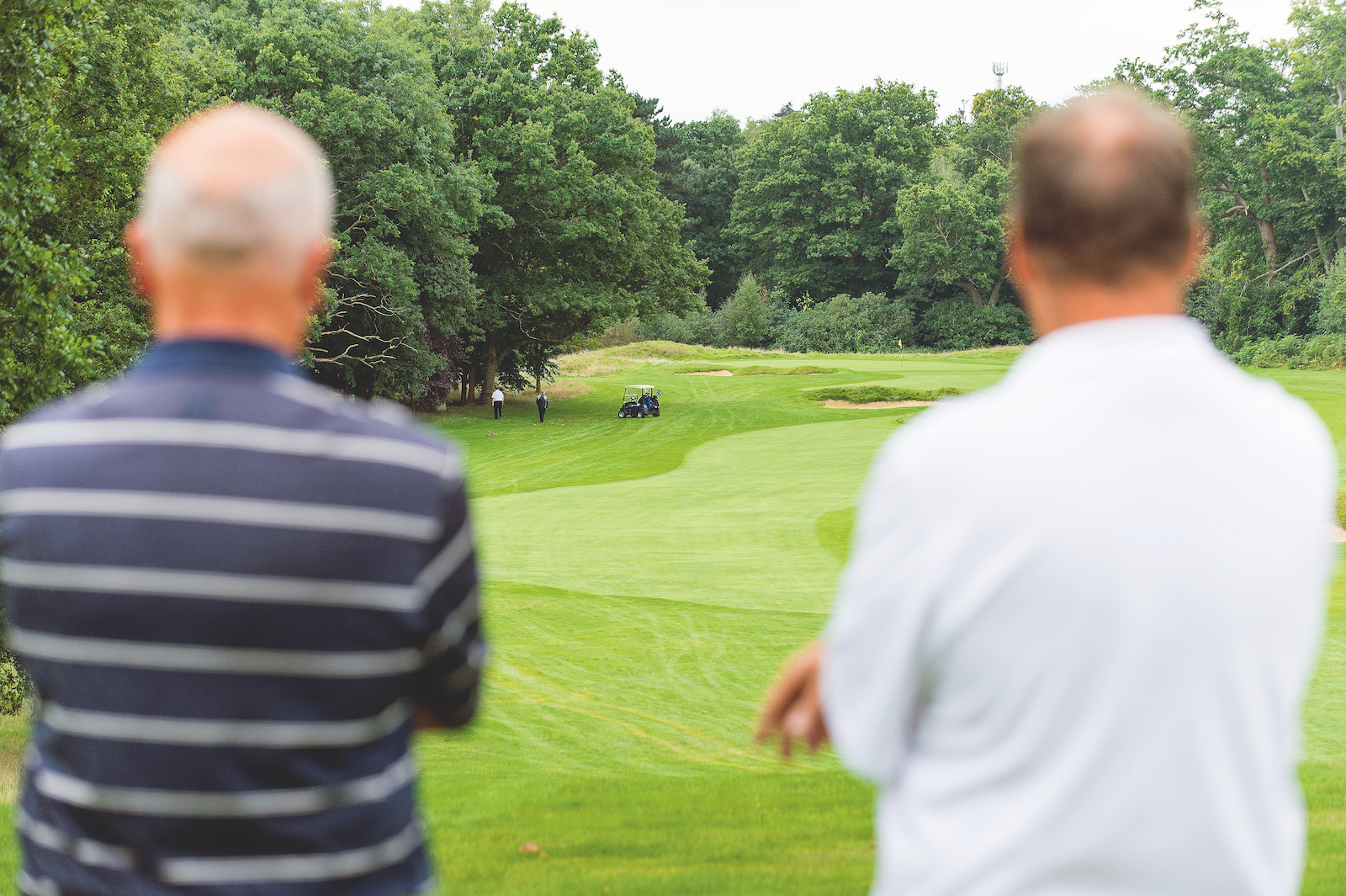
The advice was always to wave those behind through as soon as it became apparent a ball would not be easily found, but precious few seem to remember that these days. Those behind typically have to watch the full search, without so much as a glance over the shoulder, followed by either the move across to the provisional ball or, worse still, long walk back to the tee. Mercifully, at least the search time is now down to three minutes from five.
Marking your scorecard on the green
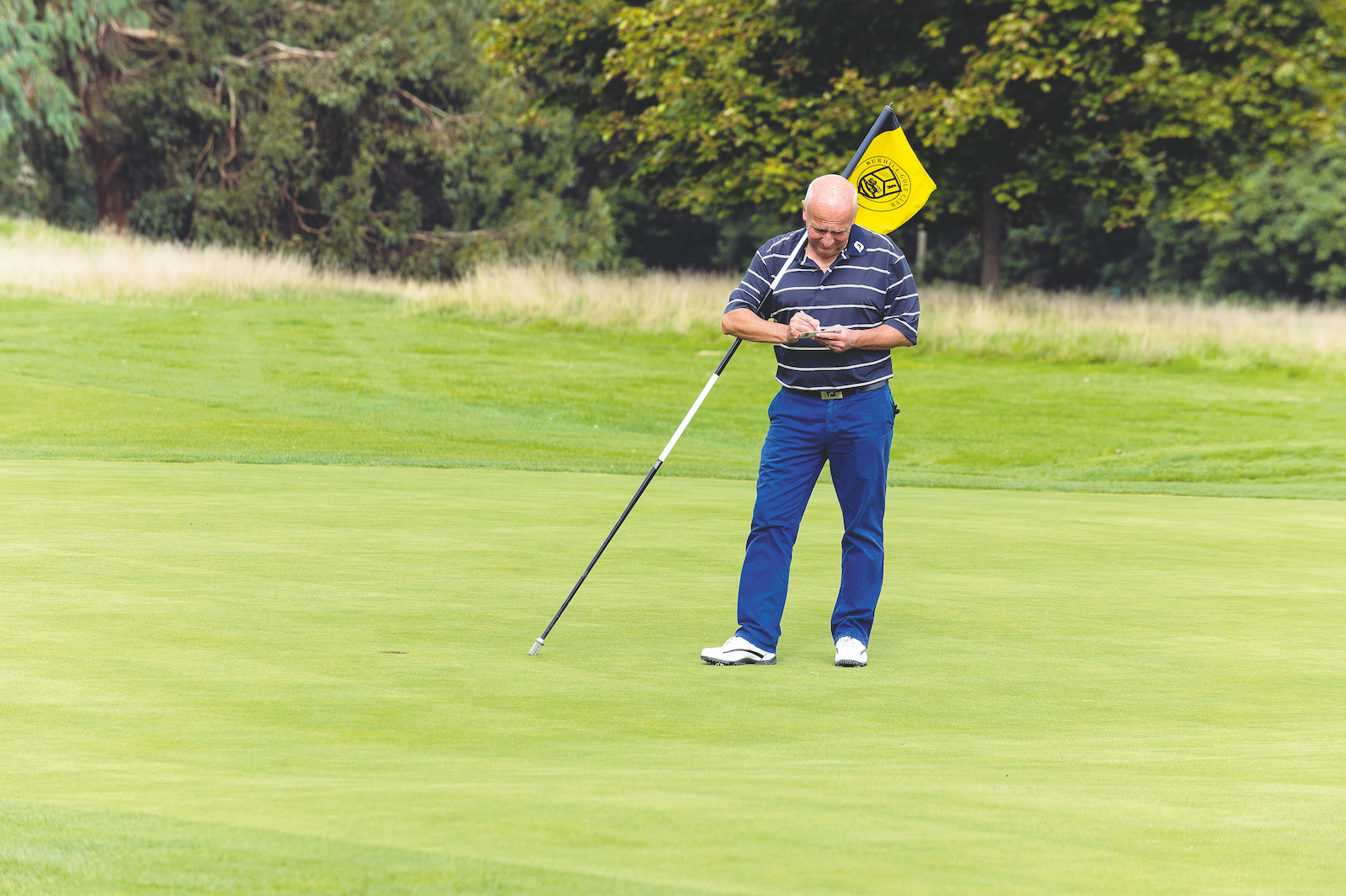
Watching the scenario depicted here while standing in the fairway waiting to play into the green is likely to lead to a rapid rise in blood pressure. There are plenty of chances to fill in your scorecard during a round of golf and on the green after you’ve putted out and before you’ve put the flagstick back in would be the number one place not to do it. Expect someone to have a quiet, or less quiet, word with you at some stage if you’re guilty of this!
Tee-time intervals too close together
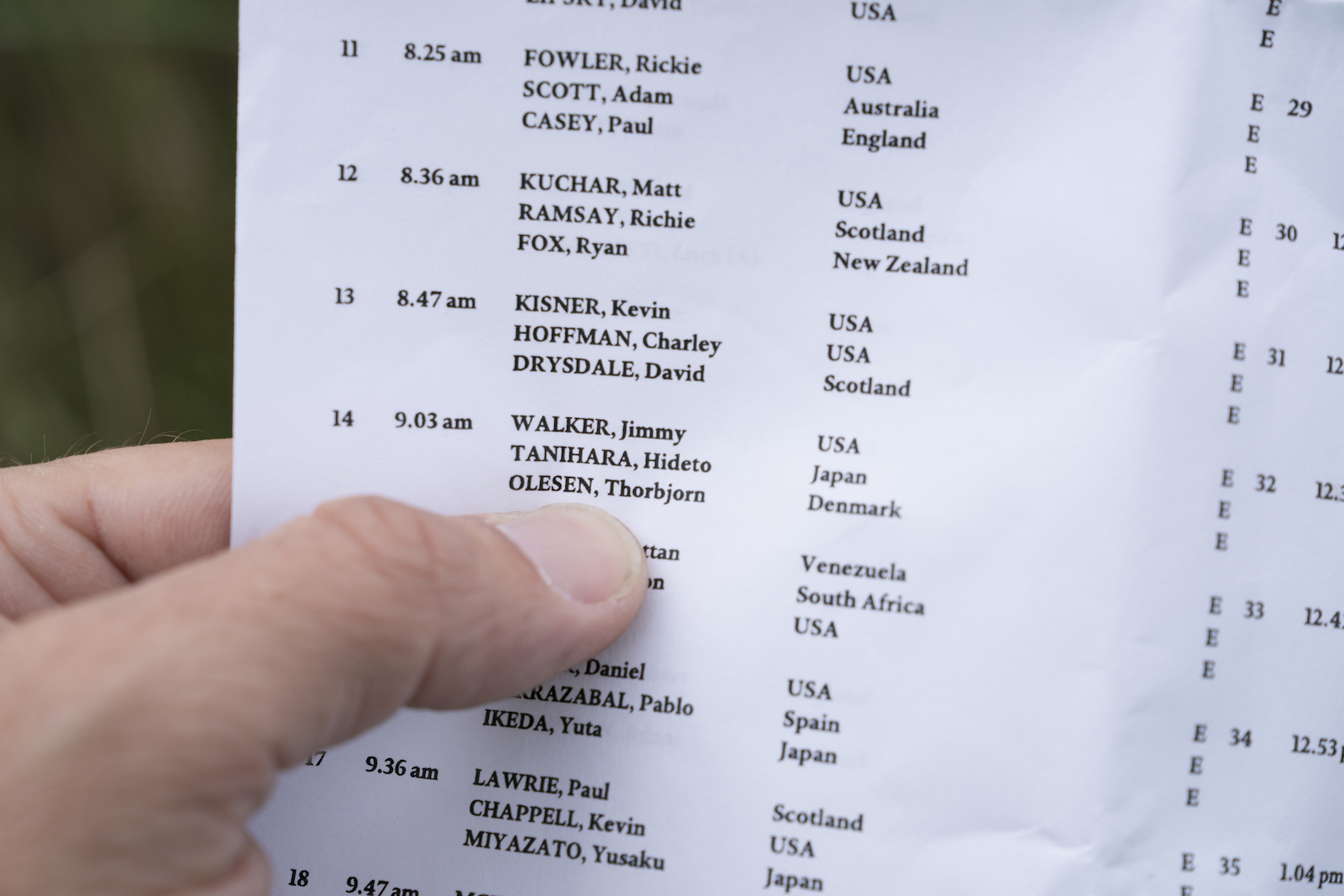
Some people see this as the number one cause of slow play – golf courses squeezing too many people out at the same time and creating bottlenecks. From an income perspective it might seem sensible to get as many green fees in as possible, but that could prove shortsighted if people stop returning because it takes five-plus hours to get round. The ideal interval is probably not a precise science and there are various factors at play, but many think ten to 12 minutes works best… if you can get it past the club management!
Not waving people through when the course ahead is clear
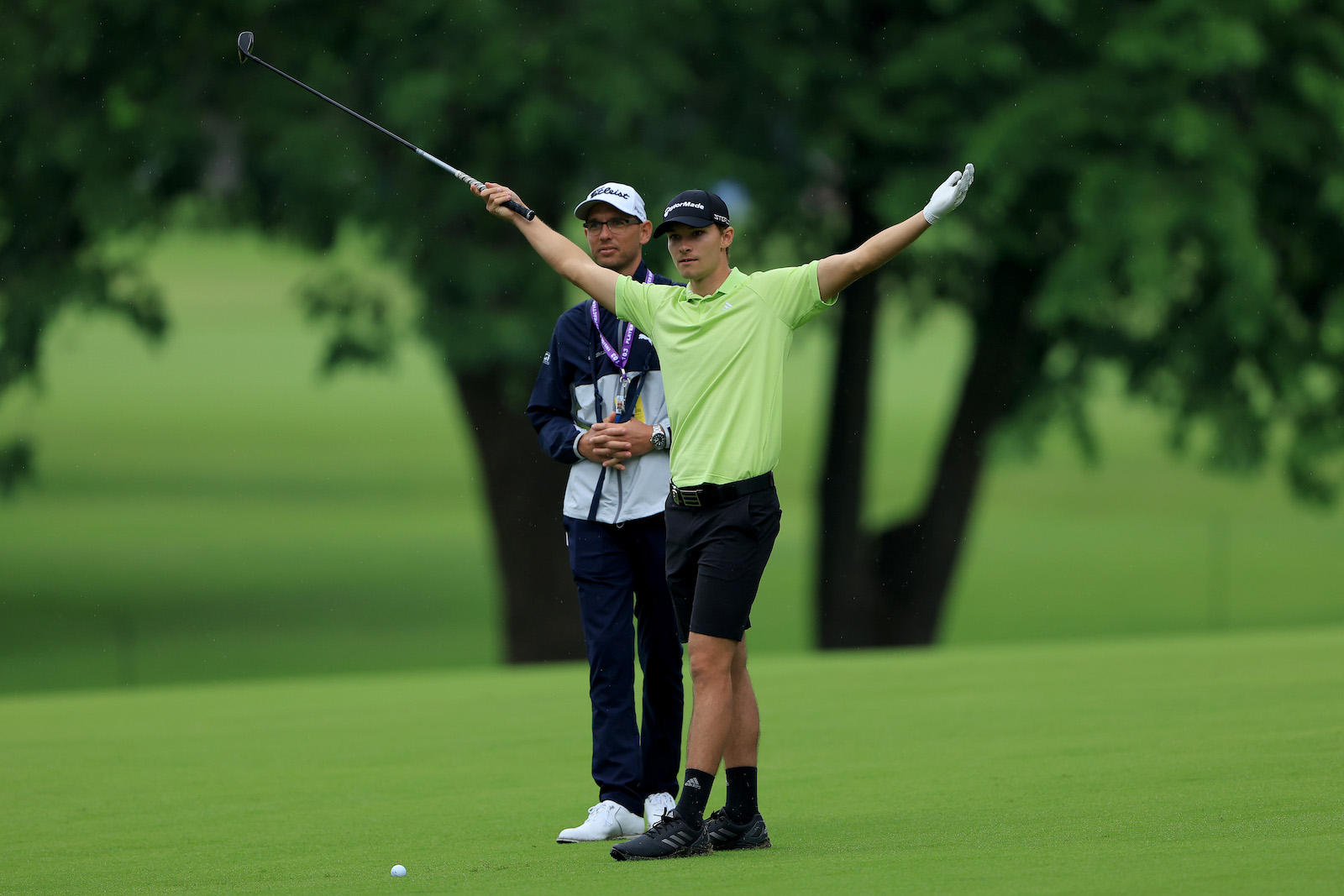
Rules 5.6b in the book is all about a prompt pace of play, encouraging us to let faster players through. But some golfers seem reluctant to be overtaken. We’ve all probably watched the group ahead almost running between shots rather than waving us through. Don’t be too proud to wave people through if they’re clearly playing faster than you and the course ahead is clear. At the end of the day, nobody likes feeling hassled, and nobody likes being held up, so surely it’s the best solution for all parties?
Not being ready to play
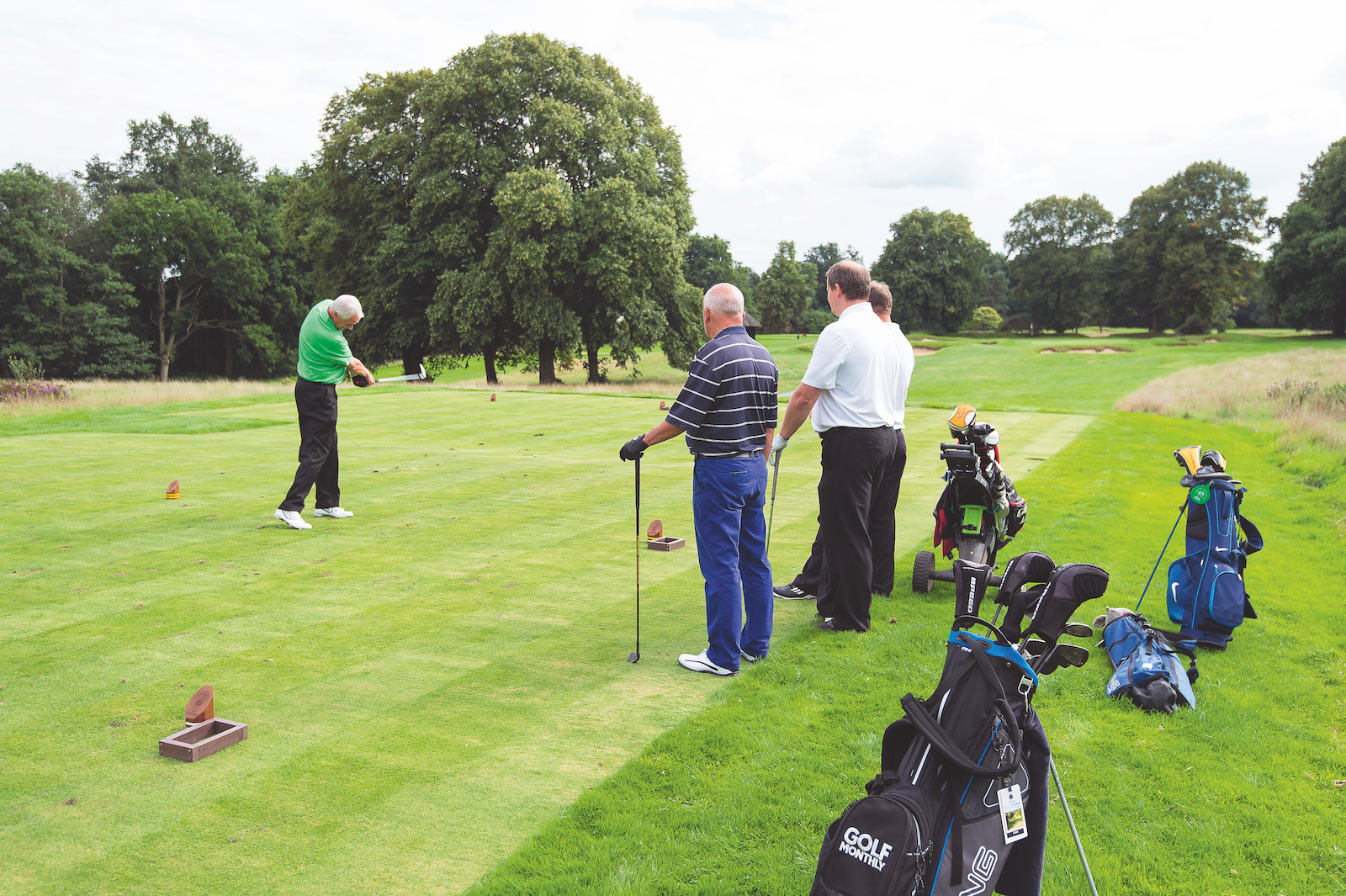
One of the biggest causes of slow play is the golfer simply not being ready to play when it is his or her turn on the tee, fairway or green or any time the course ahead is clear. Golf is not a race, so you don’t have to be relentless in your pursuit of the finishing post. But you do need to be ready to go as soon as it’s your turn rather than a minute afterwards, to prevent unnecessary frustration for others in your group and all those behind you. Rule 5.6b says “a round of golf is meant to be played at a prompt pace”.

Jeremy Ellwood has worked in the golf industry since 1993 and for Golf Monthly since 2002 when he started out as equipment editor. He is now a freelance journalist writing mainly for Golf Monthly. He is an expert on the Rules of Golf having qualified through an R&A course to become a golf referee. He is a senior panelist for Golf Monthly's Top 100 UK & Ireland Course Rankings and has played all of the Top 100 plus 91 of the Next 100, making him well-qualified when it comes to assessing and comparing our premier golf courses. He has now played 1,000 golf courses worldwide in 35 countries, from the humblest of nine-holers in the Scottish Highlands to the very grandest of international golf resorts. He reached the 1,000 mark on his 60th birthday in October 2023 on Vale do Lobo's Ocean course. Put him on a links course anywhere and he will be blissfully content.
Jezz can be contacted via Twitter - @JezzEllwoodGolf
Jeremy is currently playing...
Driver: Ping G425 LST 10.5˚ (draw setting), Mitsubishi Tensei AV Orange 55 S shaft
3 wood: Srixon ZX, EvenFlow Riptide 6.0 S 50g shaft
Hybrid: Ping G425 17˚, Mitsubishi Tensei CK Pro Orange 80 S shaft
Irons 3- to 8-iron: Ping i525, True Temper Dynamic Gold 105 R300 shafts
Irons 9-iron and PW: Honma TWorld TW747Vx, Nippon NS Pro regular shaft
Wedges: Ping Glide 4.0 50˚ and 54˚, 12˚ bounce, True Temper Dynamic Gold 105 R300 shafts
Putter: Kramski HPP 325
Ball: Any premium ball I can find in a charity shop or similar (or out on the course!)